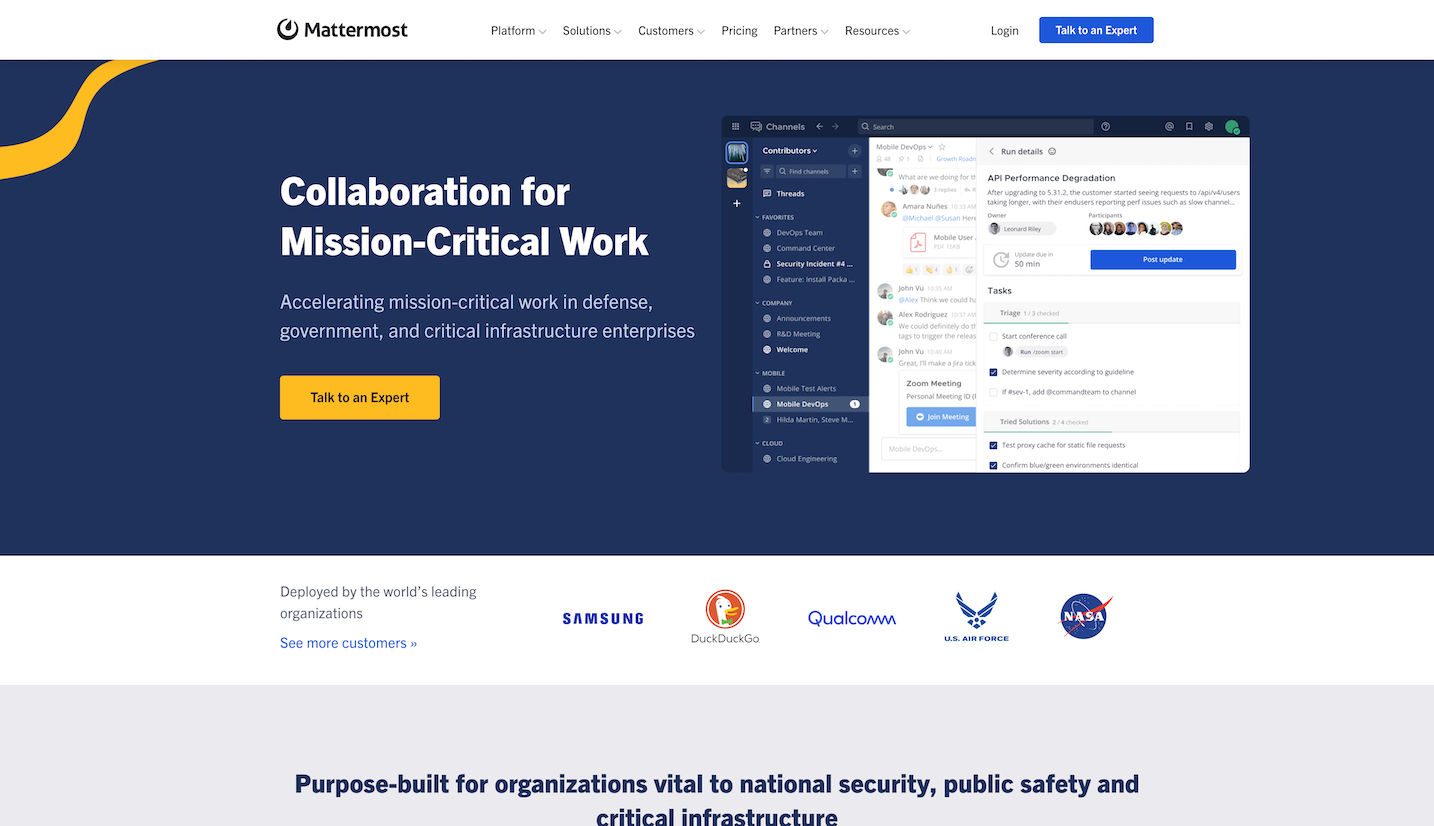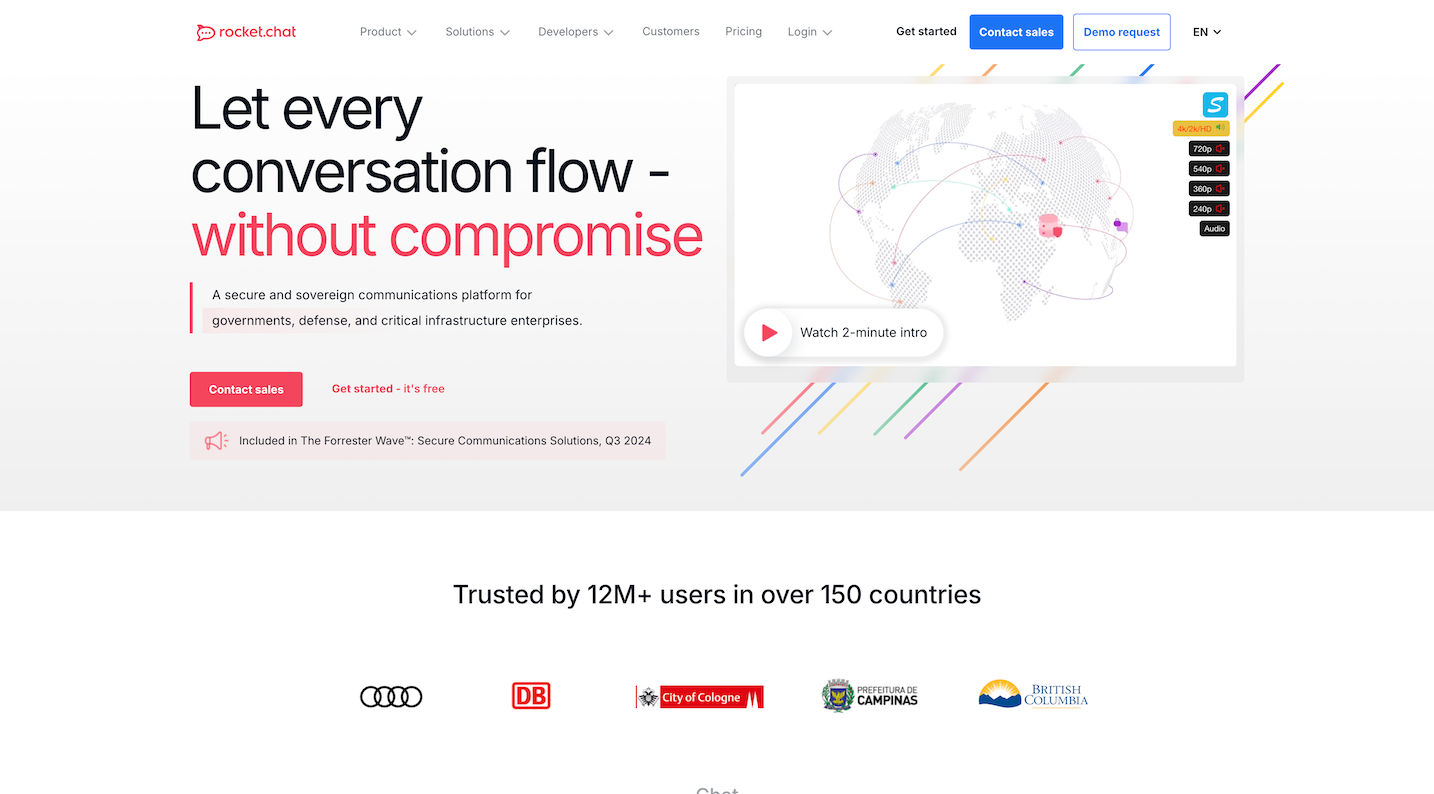
3 Best Open Source Alternatives to Slack in 2025: Comprehensive Guide
Slack has become a ubiquitous tool for team communication, but its proprietary nature and pricing structure can be a barrier for some organizations. Fortunately, the open-source community has stepped up with excellent alternatives that offer similar, and in some cases, superior features. In this article, we’ll delve into three of the best open-source Slack alternatives: Mattermost, Rocket.Chat, and Zulip. We’ll explore their key features, strengths, weaknesses, and target audience to help you determine which one best fits your team’s needs.
1. Mattermost: Flexible, Secure, and Customizable

Mattermost (mattermost.com) positions itself as a flexible, open-source messaging platform that empowers secure collaboration. It’s designed with a focus on enterprises and teams that require a high degree of control over their data and infrastructure.
Key Features:
- Self-Hosted: A significant advantage of Mattermost is its self-hosting capability. You can deploy it on your own servers, ensuring complete data sovereignty and control over your environment. This is crucial for organizations with strict compliance requirements or those operating in highly regulated industries.
- Customization: Mattermost offers extensive customization options. From branding and themes to custom integrations and plugins, you can tailor the platform to match your organization’s specific needs and workflows.
- Integrations: Out-of-the-box integrations with popular developer tools like Jira, Jenkins, GitLab, and more streamline workflows.
- Mobile Apps: Native mobile apps for iOS and Android enable seamless communication on the go.
- Advanced Permissions: Granular permission controls allow administrators to manage user access and channel visibility effectively. This ensures that sensitive information remains protected.
- Compliance and Security: Designed for organizations with compliance requirements like HIPAA and GDPR.
- Workflow Automation: Use Playbooks to standardize processes.
- Boards: Project management inside the messaging platform itself
Pros:
- Data Control: Complete control over your data through self-hosting.
- Security: Robust security features for sensitive information.
- Scalability: Designed to scale to handle large teams and complex deployments.
- Customization: Highly customizable to fit specific organizational needs.
- Developer-Focused: Strong integrations with developer tools.
Cons:
- Self-Hosting Overhead: Self-hosting requires technical expertise and resources for setup and maintenance.
- Complexity: The extensive feature set can be overwhelming for smaller teams with simpler needs.
- The free version has limitations.
Target Audience:
Mattermost is ideally suited for:
- Enterprises with strict security and compliance requirements.
- Organizations that need complete control over their data and infrastructure.
- Development teams seeking deep integrations with their toolchain.
- Large teams that require a scalable and customizable communication platform.
2. Rocket.Chat: Community-Driven Communication

Rocket.Chat (rocket.chat) is a community-driven, open-source communication platform that offers a comprehensive set of features for team collaboration. It differentiates itself with a strong focus on omnichannel communication and customer engagement.
Key Features:
- Omnichannel: Rocket.Chat unifies communication channels, including live chat, email, social media, and messaging apps, into a single platform. This allows you to manage all interactions from one central location.
- Live Chat: Robust live chat functionality enables real-time communication with website visitors and customers.
- Federation: Connect with other Rocket.Chat servers to communicate with users on different instances. This allows for inter-company collaboration while maintaining data sovereignty.
- Audio and Video Conferencing: Built-in audio and video conferencing capabilities facilitate real-time meetings and collaboration.
- Marketplace: A rich marketplace of apps and integrations extends the platform’s functionality.
- Self-Managed, Cloud or SaaS: Flexible deployment options, whether you want to host it yourself or on the cloud.
- Customizable UI: Tailor the look and feel of your platform
Pros:
- Omnichannel Communication: Unifies communication from various sources into one platform.
- Live Chat Functionality: Excellent for customer support and engagement.
- Extensibility: Extensive marketplace of apps and integrations.
- Federation: Allows communication between different Rocket.Chat instances.
- Deployment Flexibility: Offers self-managed, cloud, and SaaS deployment options.
Cons:
- Complexity: The extensive feature set can be overwhelming for smaller teams.
- Performance: Some users have reported performance issues with large deployments.
- Community Support: While the community is active, response times can vary.
Target Audience:
Rocket.Chat is well-suited for:
- Organizations that need to manage communication across multiple channels.
- Businesses that want to provide live chat support to their customers.
- Teams that require a feature-rich communication platform with extensive customization options.
- Companies looking for a platform that supports federation and inter-company collaboration.
3. Zulip: Organized Asynchronous Communication

Zulip (zulip.com) is a powerful open-source team chat application with a unique and highly organized approach to communication. It distinguishes itself with its topic-based threading model, designed to promote focused discussions and reduce information overload.
Key Features:
- Topic-Based Threading: Zulip’s core feature is its topic-based threading. Messages are organized into streams and then further categorized by topics, making it easy to follow conversations and find relevant information.
- Powerful Search: Zulip’s robust search functionality allows you to quickly find messages based on keywords, streams, topics, users, and dates.
- Markdown Support: Supports Markdown for rich text formatting.
- Keyboard-Centric Interface: Designed for efficient navigation and interaction using keyboard shortcuts.
- Integrations: Integrates with a wide range of tools and services, including Jira, GitHub, and more.
- Email Integration: Seamless integration with email allows users to participate in discussions directly from their inbox.
- Mobile and Desktop Apps: Native apps for all major platforms.
- Self-hosting: Gives you control over your data.
Pros:
- Organization: The topic-based threading system promotes highly organized communication.
- Searchability: Powerful search functionality makes it easy to find information.
- Focus: Reduces distractions and promotes focused discussions.
- Efficiency: Keyboard-centric interface for efficient interaction.
- Email Integration: Seamless integration with email.
Cons:
- Learning Curve: The unique threading model can take some getting used to.
- Real-time Chat: Zulip is not ideal for fast-paced, real-time conversations.
- Limited Features: Not as feature-rich as Mattermost or Rocket.Chat in some areas.
Target Audience:
Zulip is a great choice for:
- Teams that value organized and asynchronous communication.
- Organizations that need to manage complex projects with multiple ongoing discussions.
- Developers who need a platform that supports Markdown and code snippets.
- Teams that are overwhelmed by the noise of traditional chat applications.
Mattermost, Rocket.Chat, and Zulip each offer compelling open-source alternatives to Slack. Mattermost provides flexibility, security, and customization for enterprise environments. Rocket.Chat excels in omnichannel communication and customer engagement. Zulip stands out with its unique topic-based threading, promoting organized and focused discussions. By carefully considering your team’s specific needs and priorities, you can choose the open-source solution that best empowers your communication and collaboration. We encourage you to try each platform to determine which one resonates best with your team’s workflow and culture.
Further Steps:
- Add screenshots: Include relevant screenshots for each platform to visually demonstrate their interfaces and key features.
- Consider pricing: While focused on open source, briefly touch upon any paid tiers or support options available for each platform.
- Call to action: Encourage readers to try out the platforms and leave comments with their experiences.
This comprehensive review provides a strong foundation for your article. Remember to tailor the content to your specific audience and add your own unique perspective and insights. Good luck!
